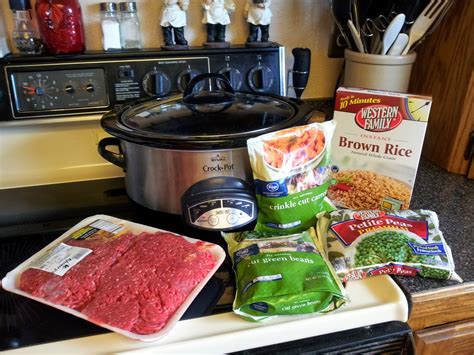Introduction
In the realm of pet ownership, ensuring the well-being of our furry companions is of paramount importance. One crucial aspect of this responsibility lies in providing them with a nutritious and balanced diet. With the vast array of pet food options available, deciphering the ingredient list can be a daunting task. This comprehensive guide aims to empower pet owners with the knowledge necessary to make informed choices about the ingredients that go into their pets’ food.

Understanding the Basics of Pet Food Ingredients
Pet food ingredients can be broadly classified into two main categories:
-
Essential Nutrients: These ingredients are crucial for maintaining a pet’s health and well-being. They include protein, carbohydrates, fats, vitamins, and minerals.
-
Non-Essential Ingredients: These ingredients serve various purposes, such as enhancing palatability, preserving freshness, and promoting digestion. They may include flavors, colors, preservatives, and antioxidants.
Top 10 Ingredients to Look for in Pet Food
-
Real Meat: High-quality pet food will typically list a specific meat source, such as chicken, beef, or fish, as the first ingredient.
-
Whole Grains: Brown rice, oatmeal, and barley are excellent sources of carbohydrates, fiber, and essential vitamins.
-
Fats and Oils: Healthy fats from sources such as chicken fat, salmon oil, or flaxseed provide energy and support skin and coat health.
-
Fruits and Vegetables: Fruits and vegetables, such as carrots, apples, and blueberries, add vitamins, minerals, and antioxidants.
-
Probiotics: Beneficial bacteria help support a healthy digestive system and immune function.
-
Glucosamine and Chondroitin: These supplements promote joint health and reduce inflammation.
-
Omega-3 and Omega-6 Fatty Acids: These essential fatty acids support heart, brain, and skin health.
-
Taurine: An essential amino acid for cats, taurine is vital for heart and eye health.
-
Antioxidants: Antioxidants, such as vitamin E and beta-carotene, protect cells from damage.
-
Prebiotics: Prebiotics nourish beneficial bacteria in the digestive tract, supporting overall gut health.
Ingredients to Avoid in Pet Food
-
Corn and Wheat: These common fillers provide little nutritional value and may cause allergies or digestive issues.
-
By-Products: By-products are rendered parts of animals that are not fit for human consumption and may contain low-quality ingredients.
-
Artificial Flavors and Colors: These additives may be aesthetically appealing but offer no nutritional value and may even be harmful.
-
Excessive Preservatives: While preservatives are necessary to extend shelf life, excessive amounts can be detrimental to a pet’s health.
-
Ethoxyquin: A controversial preservative linked to liver and kidney damage.
-
BHA and BHT: Synthetic antioxidants that have been shown to cause cancer in animals.
-
Propylene Glycol: A humectant that can cause skin irritation and respiratory problems.
Reading Pet Food Ingredient Lists
-
Start with the First Ingredient: The first ingredient listed is the most abundant component of the food.
-
Look for Specific Ingredients: Remember the top ingredients to look for and avoid when scanning the ingredient list.
-
Understand the Source: Identify the source of meat, grains, and fats to ensure they meet your quality standards.
-
Consider the Quantity: Pay attention to the quantity of essential nutrients, such as protein, carbohydrates, and fats.
-
Seek Veterinary Guidance: Consult with a veterinarian for personalized advice based on your pet’s specific health needs.
Ingredient Reviews: Case Studies
Case Study 1: Real Meat vs. By-Products
A study published in the Journal of Veterinary Internal Medicine found that dogs fed a diet with real chicken meat had significantly better digestive health and weight management compared to those fed a diet with chicken by-products.
Case Study 2: Omega-3 Fatty Acids vs. Omega-6 Fatty Acids
Research conducted by the University of California, Davis revealed that cats fed a diet rich in omega-3 fatty acids had improved coat health, reduced inflammation, and better cognitive function than those fed a diet high in omega-6 fatty acids.
Tips and Tricks for Choosing High-Quality Pet Food
-
Prioritize real meat as the first ingredient.
-
Choose pet food with whole grains over fillers.
-
Look for healthy fats from reputable sources.
-
Incorporate fruits, vegetables, and supplements to enhance nutritional value.
-
Avoid excessive preservatives and artificial additives.
-
Consider your pet’s age, activity level, and health needs.
Future Trends in Pet Food Ingredients
-
Personalized Nutrition: Pet food tailored to individual pets’ genetic profiles and health conditions.
-
Functional Ingredients: Ingredients that provide specific health benefits, such as probiotics for digestive health and glucosamine for joint support.
-
Sustainable Sourcing: An emphasis on ingredients from environmentally friendly and renewable sources.
-
Transparency and Traceability: Advanced technologies enabling pet owners to track the origin and quality of ingredients.
Conclusion
By understanding the ingredients in your pet’s food, you can make informed choices that support their overall health and well-being. As the pet food industry continues to evolve, staying abreast of the latest ingredient trends and research will empower you to provide your furry companion with the best possible nutrition. Remember, a healthy pet is a happy pet!





















